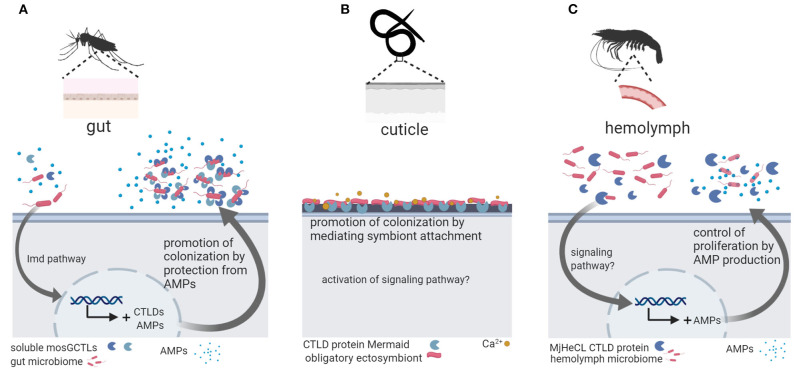Figure 1.
Invertebrate C-type lectin-like domain (CTLD) proteins function in host colonization by the microbiota. (A) In the mosquito Aedes aegypti, gut microbiota bacteria are coated by soluble mosCTLs and, in this way, protected from antimicrobial peptides (AMPs) secreted by the host, promoting colonization and persistence in the gut (51). (B) In the marine nematode Laxus oneistus, the calcium-dependent CTLD protein Mermaid mediates the agglutination and attachment of the obligatory ectosymbiont, a sulfur-oxidizing bacterium that forms a monolayer in the cuticle. If symbiont attachment via Mermaid leads to activation of intracellular signaling remains unknown. (C) In the kuruma shrimp Marsupenaeus japonicas, the CTLD protein MjHeCL binds microbiota bacteria in the hemolymph and activates AMP production to prevent bacterial overgrowth. Figure created with Biorender.com. Silhouette image for L. oneistus was downloaded from PhyloPic (no copyright).

